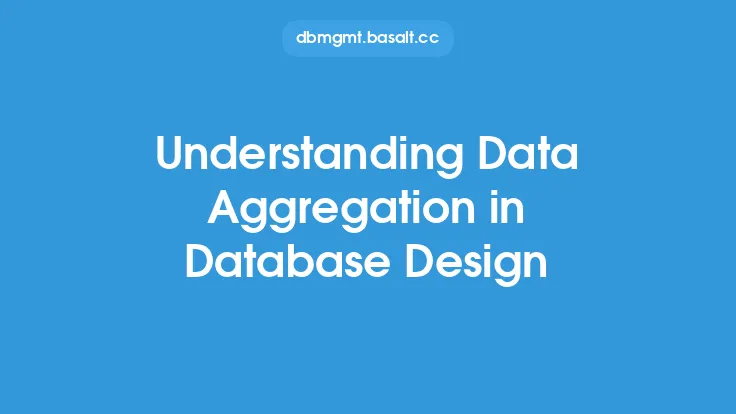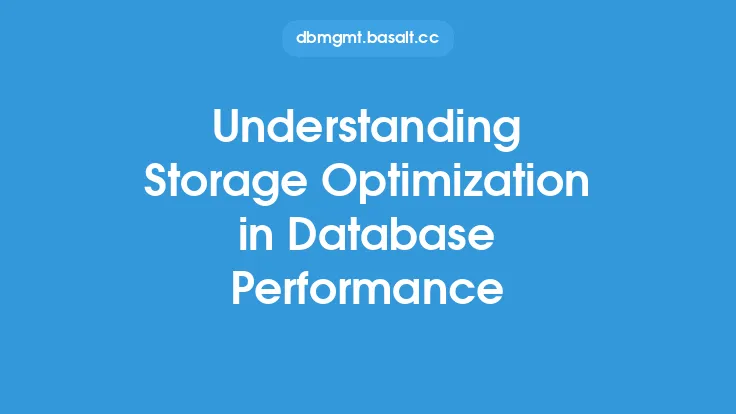Scalability is a critical aspect of database systems, as it enables them to handle increasing amounts of data and user traffic without compromising performance. A scalable database system can adapt to changing demands, ensuring that it remains responsive and efficient even as the workload grows. In this article, we will delve into the concept of scalability in database systems, exploring its importance, types, and key considerations.
Introduction to Scalability
Scalability refers to the ability of a database system to handle increased load and demand without a significant decrease in performance. A scalable database system can be thought of as one that can efficiently manage growing amounts of data, user traffic, and query complexity. Scalability is not just about handling more data; it's also about maintaining performance, ensuring that queries are executed quickly, and providing a good user experience. There are several reasons why scalability is essential in database systems. Firstly, it allows businesses to grow and expand without worrying about their database becoming a bottleneck. Secondly, it enables organizations to handle sudden spikes in traffic or demand, such as during peak sales periods or when a new application is launched. Finally, scalability helps to future-proof database systems, ensuring that they can adapt to changing requirements and technologies.
Types of Scalability
There are several types of scalability in database systems, each addressing different aspects of growth and performance. Vertical scalability, also known as scale-up, involves increasing the power of a single server or node to handle more load. This can be achieved by upgrading the hardware, adding more CPU cores, or increasing the amount of memory. Horizontal scalability, also known as scale-out, involves adding more servers or nodes to a cluster to distribute the load. This approach allows for greater flexibility and can be more cost-effective than vertical scaling. Another type of scalability is functional scalability, which refers to the ability of a database system to handle new features, functions, or applications without compromising performance. Finally, there is geographic scalability, which involves deploying database systems across multiple locations to handle regional or global workloads.
Key Considerations for Scalability
When designing a scalable database system, there are several key considerations to keep in mind. Firstly, it's essential to understand the workload and usage patterns of the database. This includes analyzing query types, data access patterns, and user behavior. Secondly, the database architecture should be designed to support scalability, with features such as distributed data storage, load balancing, and automatic failover. Thirdly, the choice of database management system (DBMS) is critical, as some DBMS are more scalable than others. For example, NoSQL databases such as MongoDB and Cassandra are designed to handle large amounts of unstructured data and can scale horizontally more easily than traditional relational databases. Finally, scalability should be considered from the outset, rather than as an afterthought. This means designing the database system to be flexible and adaptable, with the ability to add or remove resources as needed.
Database Design for Scalability
Database design plays a critical role in scalability, as a well-designed database can handle increasing amounts of data and user traffic more efficiently. There are several design principles that can help to improve scalability, including normalization, denormalization, and data partitioning. Normalization involves organizing data into tables to minimize data redundancy and improve data integrity. Denormalization, on the other hand, involves intentionally duplicating data to improve query performance. Data partitioning involves dividing large tables into smaller, more manageable pieces, which can improve query performance and reduce storage requirements. Additionally, indexing and caching can also help to improve scalability, by reducing the amount of time it takes to retrieve data and improving query performance.
Scalability and Data Distribution
Data distribution is a critical aspect of scalability, as it enables database systems to handle large amounts of data and user traffic. There are several data distribution strategies that can help to improve scalability, including sharding, replication, and consistent hashing. Sharding involves dividing data into smaller pieces, called shards, which are distributed across multiple servers. Replication involves duplicating data across multiple servers, to improve availability and performance. Consistent hashing involves using a hash function to map data to a specific server, which can help to improve data distribution and reduce the risk of hotspots. Additionally, data compression and encoding can also help to improve scalability, by reducing the amount of storage required and improving data transfer times.
Conclusion
Scalability is a critical aspect of database systems, as it enables them to handle increasing amounts of data and user traffic without compromising performance. By understanding the types of scalability, key considerations, and design principles, organizations can build database systems that are flexible, adaptable, and efficient. Whether it's vertical scaling, horizontal scaling, or functional scaling, there are many strategies that can help to improve scalability and ensure that database systems remain responsive and efficient, even as the workload grows. By prioritizing scalability and designing database systems with growth in mind, organizations can future-proof their databases and ensure that they remain a key asset for years to come.





